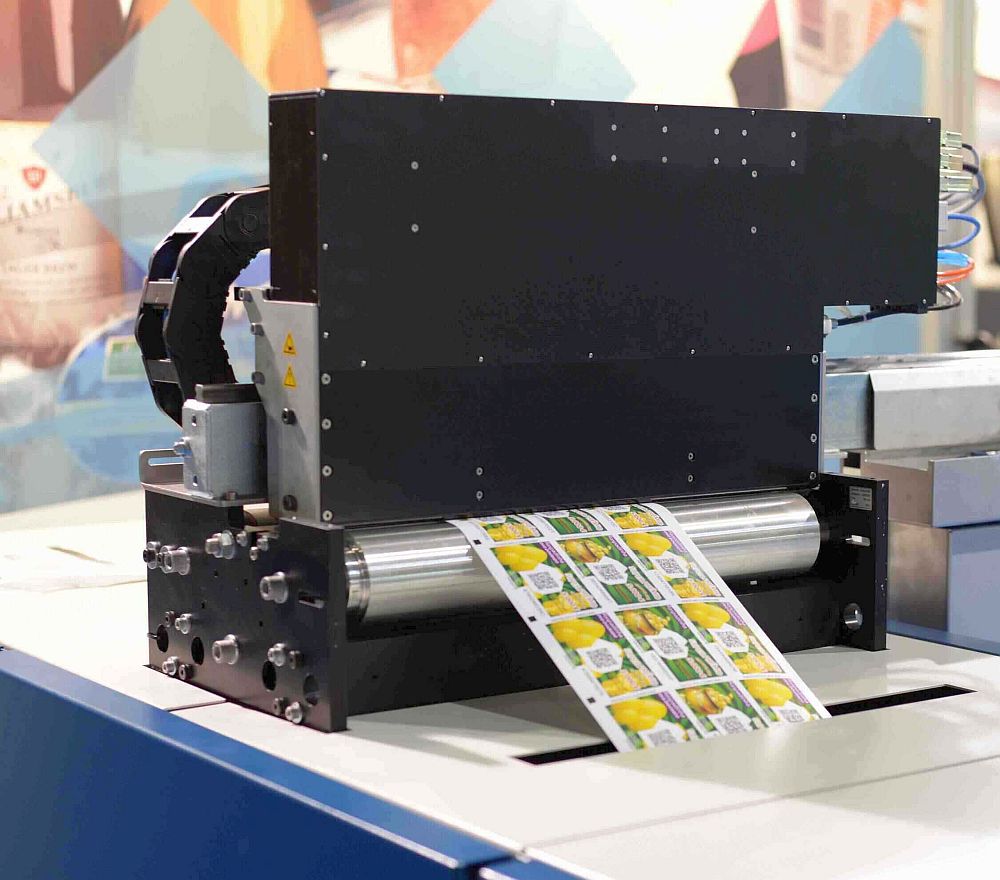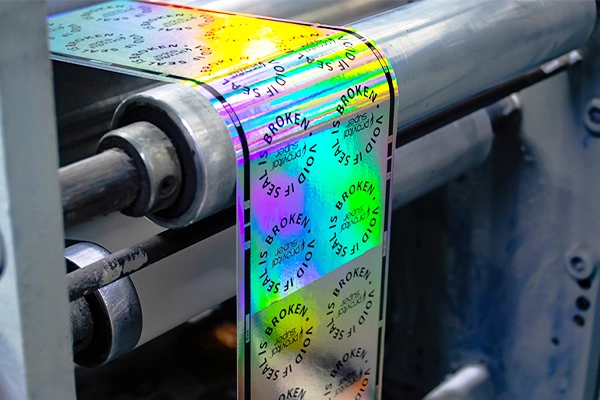In today’s rapidly evolving world, ensuring the authenticity and safety of products is paramount. This is where thermal printing for security labels plays a significant role. From protecting brand integrity to safeguarding consumers, thermal printing technology offers a reliable solution for creating secure labels that are difficult to replicate or tamper with. As businesses and consumers alike seek ways to combat counterfeiting, understanding the benefits and applications of thermal printing becomes essential.

What is Thermal Printing?
Thermal printing is a digital printing process that produces images by selectively heating coated thermochromic paper, or thermal paper, when the paper passes over the thermal print head. The heat causes a chemical reaction within the paper, resulting in a high-quality image or barcode. This technology is widely used for printing labels, receipts, and tickets.
Why Use Thermal Printing for Security Labels?
Security labels are vital in preventing counterfeit products from entering the market. They offer a visual or tactile way for consumers and businesses to verify a product’s authenticity. By using thermal printing for security labels, businesses can incorporate unique security features such as holograms, watermarks, and QR codes, which are challenging to reproduce by counterfeiters.
1. Cost-Effective Solution
Thermal printing is a cost-effective solution for producing security labels. Unlike traditional printing methods, there is no need for ink or toner, which reduces operational costs. Furthermore, the technology allows for on-demand printing, minimizing waste and enabling businesses to produce labels as needed.
2. High Durability
Labels produced through thermal printing are durable and can withstand various environmental conditions, such as heat, moisture, and abrasion. This makes them ideal for products that may be exposed to harsh environments.
3. Customization Options
Thermal printing offers a high degree of customization. Businesses can design labels with specific security features tailored to their needs. This includes adding logos, unique serial numbers, and other identifiers that help distinguish authentic products from counterfeits.
Applications of Thermal Printing in Security Labels
Thermal printing is used across various industries, including pharmaceuticals, electronics, and food and beverage. In each sector, security labels serve as a deterrent against counterfeiting, ensuring that consumers receive genuine products.
1. Pharmaceutical Industry
In the pharmaceutical industry, the safety and authenticity of products are of utmost importance. Security labels printed using thermal technology help ensure that medications are genuine and have not been tampered with. This not only protects consumers but also maintains the reputation of pharmaceutical companies.
2. Electronics Industry
The electronics industry is another sector where counterfeiting is a significant concern. Security labels provide an additional layer of protection, allowing consumers and businesses to verify the authenticity of electronic components and devices.
3. Food and Beverage Industry
In the food and beverage industry, maintaining product integrity is crucial. Security labels help prevent the distribution of counterfeit or expired products, safeguarding consumers’ health and ensuring compliance with stringent industry regulations.
Integrating RFID Technology
Another advancement in security labels is the integration of RFID technology. By embedding RFID tags into labels, businesses can enhance traceability and track products throughout the supply chain. This integration provides an additional layer of security, making it even more challenging for counterfeiters to replicate products.
1. Benefits of RFID in Security Labels
RFID technology offers several benefits, including real-time data tracking, improved inventory management, and increased operational efficiency. By combining RFID with thermal printing, businesses can create highly secure and efficient labeling solutions.
Challenges and Considerations
While thermal printing offers numerous benefits, businesses must also be aware of potential challenges. These may include the initial cost of investing in thermal printers and ensuring that staff are adequately trained to use the technology. Additionally, selecting the right type of thermal paper and maintaining the equipment are crucial for achieving the best results.
Future Trends in Thermal Printing for Security Labels
The future of thermal printing for security labels looks promising, with advancements in technology continuing to enhance label security features. Innovations such as smart labels and the integration of blockchain technology are set to revolutionize the industry, providing even more robust solutions for combating counterfeiting.
1. Smart Labels
Smart labels incorporate advanced technology such as sensors and NFC chips, allowing consumers to interact with products in new ways. These labels can provide additional product information, verify authenticity, and even track product conditions during transit.
2. Blockchain Integration
Blockchain technology offers a secure and transparent way to track products throughout the supply chain. By integrating blockchain with security labels, businesses can provide consumers with a verifiable record of a product’s journey from manufacture to purchase.
Conclusion
Thermal printing for security labels is an invaluable tool in the fight against counterfeiting. By understanding the benefits and applications of this technology, businesses can ensure the authenticity and safety of their products, ultimately protecting their brand and their customers. As technology continues to evolve, the potential for thermal printing in security labeling is vast, offering innovative solutions for a wide range of industries.

FAQs
What is the primary advantage of thermal printing in security labels?
The primary advantage is its cost-effectiveness and the ability to produce highly durable and customizable labels that incorporate unique security features.
How does RFID enhance security labels?
RFID enhances security labels by providing real-time data tracking and improved traceability, making it difficult for counterfeiters to replicate products.
What are smart labels?
Smart labels are advanced labels that incorporate technology such as sensors and NFC chips, allowing consumers to interact with products and verify their authenticity.
For more information on anti-counterfeit solutions, visit this link. Learn about anti-counterfeit printing for beginners here, and explore RFID tags in printing here.
This article contains affiliate links. We may earn a commission at no extra cost to you.







